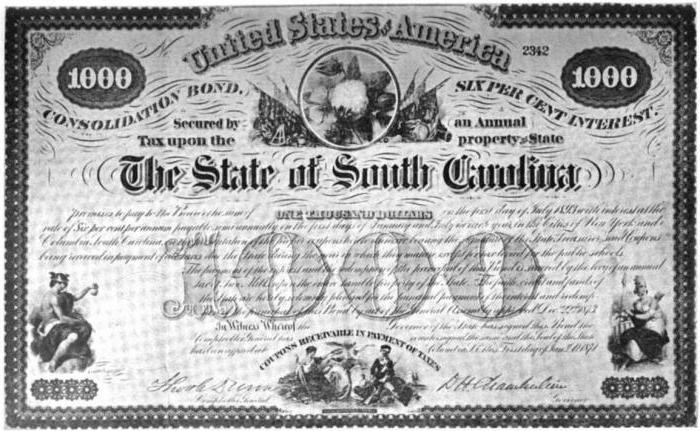The work of any enterprise, institution or organization is associated with the implementation of financial activities in the modern market. Financial instruments of the financial market are diverse types of documents having value in monetary terms, with the help of which the company carries out operations in the market. Financial instruments are classified by similar characteristics, the most significant for each type.
Financial instruments include varieties of long-term and short-term cash liabilities that can be represented as goods in the markets. Financial documents are presented as forms of investment, they are used for trade. The funds of the enterprise, presented in the reporting documentation and serving to improve the financial condition, are classified as financial documents. They give the owner the right to attract new investments, including debt instruments, stocks, options, loans and guarantees.
Dividing instruments depending on the type of financial market

Each activity requires separate financial instruments:
- settlement securities and money form the basis of the credit market;
- securities, depending on approval by legal and regulatory acts, are a stock market instrument;
- in the foreign exchange market, foreign money, foreign currency settlement securities, and some varieties of securities are in use;
- insurance market serves insurance products in the form of various services, some types of securities and settlement securities;
- the securities market uses settlement documents and securities, this allows you to use gold, platinum, silver accumulating to create reserves as financial instruments.
Financial instruments are divided according to the method of circulation:
- the most common for servicing monetary operations are short-term financial instruments, the validity of which is up to one year;
- the circulation period of long-term documents is determined by the time of more than a year, they include securities without determining the expiration date on the capital market, which are called unlimited.
Division of financial documents by type of income
Regardless of the change in the percentage of the loan and the amount of profit from capital, a type of securities is allocated that guarantee a certain amount of income. Upon repayment, the owner receives a fixed amount of material resources.

Indefinite income instruments are called “long-term financial instruments”. The level of distribution of income on these securities depends on changes in market conditions and the floating interest rate embedded in them. The size of the benefit is affected by the indicators of the hard currency rate, discount rate and the issuer's financial position, expressed in the form of a document (investment certificate, common share).
Purpose of financial documents depending on the nature of obligations
To carry out direct transactions between the buyer and seller, the owner, contractor and subcontractor, instruments are used without subsequent financing obligations. After the transaction is completed or services are performed, the parties do not bear additional material obligations to provide financial resources.
Credit financial instruments serve as tools for arranging loan relations.Checks, bonds, bills of exchange show the nature of the transaction and require payment of the nominal value of the document at a specific time. The papers provide for the payment of additional remuneration (in percentage terms), if this amount is not included in the initial value of the face value.
Investment certificates, shares are classified as equity instruments defining operations in the financial market, confirming the rights of their holder to a specific share or share in the authorized capital of their issuer. According to the documents, the owner receives income in percentage terms or in the form of dividends.
Difference of tools by significance category
Primary financial documents belong to the category of financial instruments of the first order and combine securities (checks, bonds, bills, others). They, as a rule, are issued directly by the first-line issuer, documents confirm the holder's rights to a share or order of credit relations.
Financial instruments of a financial market of secondary importance are only securities in which the rights or obligations of their holder are determined for the sale or purchase of primary monetary documents, goods, tangible and intangible assets, and currency. These operations are foreseen for future periods on predetermined conditions. In some cases, secondary instruments are used to insure the risk of price changes. Options, forward contracts, futures contracts, swaps, depending on the type of assets used to issue them, are further divided into commodity, currency, insurance and stock documents.
Types of instruments for riskiness in the market
Risk-free financial instruments include short-term securities and securities, certificates for deposits of prosperous banks, hard currency, and valuable metals. All acquisitions and sales are carried out for a short period and conditionally do not have a degree of risk. Such a conditional definition is based only on the degree of comparison of risk with transactions under other documents, since any financial transaction carries a minimal share of risk.
Low-risk financial instruments comprise short-term debt securities in the money market, the minimum risk of which is guaranteed by the borrower's reliable financial position.
Moderately risky financial documents characterize the type of securities, which are average market instruments common among sellers and buyers. Short-term financial instruments and long-term ones are the subject of sale and purchase in the market of services, production and insurance. Those financial transaction instruments that exceed the degree of risk of the average market order are classified as high-risk securities.
Documents with a high level of risk include financial instruments of the credit market and speculative nature. The deals they represent are usually a type of high interest income venture capital venture, a highly profitable bond. Often, futures and options contracts are concluded with an enterprise or organization that is on the verge of bankruptcy or in a financial crisis.
Types of financial instruments
Depending on what operating activities the instruments support, the composition and nature of financial papers and documents changes:
- cash and tangible assets, representing the basis for credit relations of two or more participating parties;
- checks in the prescribed form expressing the order of the account holder to make payments upon presentation; distinguish between a bearer check, registered and order documents;
- simple and transferable letters of credit and monetary obligations of the bank, allowing by order of the client to make settlements with the benefit for the buyer or another bank in the amount of the agreed amount;
- bills of exchange representing the obligation of the debtor (issuing the bill) to pay the amount indicated in the document to the holder of the security;
- Collateral securities are a debt obligation to pay for a commercial loan received in a pledge form, the mortgagor can sell the property as collateral in repayment of the overdue debt.
Financial instruments stock transactions
Stock market instruments are divided into the following types:
- A bond is a transferring valuable document, concluding the right of the holder of the paper to receive from the initial issuer at the agreed time the value of the bond or property indicated in it, sometimes a percentage of its face value is guaranteed, which the holder of the document is guaranteed to receive.
- A share is a security that determines the holder’s rights to receive a share of the joint-stock company’s profit and to participate in the management team. After the liquidation of the joint-stock company, the owner of the block of shares receives part of the remaining property.
- Treasury bills are securities issued by the state to an entity to which it has tangible debts.
- Promissory notes represent securities. This is a document obliging to pay a debt to another person, while waiting to receive a bill as a guarantee.
- An investment certificate is a document indicating ownership of the property or containing confirmation of the contribution of property to the authorized capital or to a bank account.
- For the sale or acquisition of an initial asset by the parties during an exchange transaction, a tool called a futures contract containing related obligations is used.
- Options, as a contract, confirm the rights, but not the obligations of their holder, to exchange a predetermined amount of the initial asset and regulate the price and terms.
- The forward contract determines the next transaction for the supply of initial assets in the future period at the appointed price and on time.
- A warrant is a security that is issued and issued by a first-line issuer for financial transactions for the acquisition of its ordinary shares in a certain period of time at a fixed price.
Currency Market Tools
The main documents that have progress in the foreign exchange market are:
- valuable foreign currency assets as an object of basic operations in the financial foreign exchange market;
- securities under the letter of credit used in settlements with foreign trade enterprises on the basis of the provision of the required documents for quality certification, delivery notes and insurance policies to the banking departments;
- a bank check in foreign currency as an order of a foreign bank abroad to its branch - correspondent - to transfer the assigned amount from the account to the owner of the check;
- Bank currency bill as a settlement document presented by the main bank to its correspondent abroad;
- bill of exchange in currency it is a settlement document issued by the importer of the goods to the creditor or exporter of the first order;
- futures contracts as instruments of the foreign exchange market for transactions on the currency exchange;
- an option currency contract acting on the currency market as a right of refusal to purchase and sell foreign currency assets at a price set earlier;
- currency swap, providing for the owner priority currency exchange operations.
Instruments in the insurance market
The main financial instruments of the financial market in the field of insurance are divided into the following types:
- insurance contracts and contracts for certain types of services provided;
- agreements and reinsurance agreements used to implement material relationships between insurance offices operating in the market;
- emergency subscription or the obligation of the recipient of the goods to pay the agreed part of the loss in case of damage to the goods by carriage.
According to the duration of the insurance documents are divided into short-term, long-term and unlimited. Contracts and contracts for certain types of insurance are the main property operations in the insurance business. They are issued with a special certificate (policy) issued by the company to the insured person.
Specific instruments in the gold market
The main types of financial instruments in operations with gold and precious metals are divided as follows:
- gold and precious metals (are the main object of purchase and sale);
- system of certain securities, documents, contracts and agreements for bidding.

All considered instruments of the financial market are experiencing dynamic changes, depending on the restructuring of the legislative norms of federal regulation of various types of markets. Their application is justified by the study of the methods of other countries developed in market relations.
State financial control
The regulation on the implementation of state supervision of the legality and economic feasibility of actions on the distribution and spending of federal funds is an effective measure of the social and material development of the country and its constituent regions. Means of control are becoming the most important measures to ensure the successful operation of business units.
The main objectives of the application of control in the state
Federal employees check the property obligations of companies and individuals to the state and local government. Financial control is exercised over the correct spending and accumulation of material resources by municipal and state enterprises subordinate to their economy or operational management structures.
State supervision is subject to all monetary operations, settlements, the procedure for concluding contracts, contracts, storage of material assets and resources. To increase work efficiency, employees of regulatory organizations identify opportunities for the emergence of hidden internal reserves of the organization. If a violation of financial discipline is found, measures are taken to eliminate it, a warning is issued about further violations to strengthen the order of financial instruments.

The control line of the state serves as the basis for economic and social changes; during the audit, the degree of compliance with the rule of law of financial transactions by state and public bodies, municipal and federal services is revealed. Control over financial activities helps to restore the conformity of trade and other transactions with the interests of the state, the appropriateness of the financial policy.
Securities
To express rights to property and to realize it through transfer to another person or organization, the concept of securities exists. When preparing documents, the issuer of securities expresses relations with the loan of the owner of the securities and undertakes to pay the debt arising from the conditions for the preparation and issue of the document. The investor is a legal entity or citizen, holder of securities received from the issuer. Such documents are issued printed according to the established model or accepted for production in the form of handwritten papers and notes on accounts.
Financial instruments of the financial market in the form of securities have their own characteristics:
- the text of the document contains the essence of a certain right to property;
- property rights of the owner arise in connection with the ownership of a security;
- each security contains the details of two parties;
- if the owner owns a security, then it plays the role of a power of attorney and does not require additional supporting documents.
In conclusion, it should be noted that the financial policy of the Russian state is developed in the direction of compliance of material transactions with the interests of the country. To conduct it, stock, commodity and currency exchanges, specialized registrars and over-the-counter markets, information and settlement and deposit centers are created. Within the framework of the law, intermediary and commercial activities are carried out, depositories and investment funds exist, and a trust and trust form of financial relations is developed.











